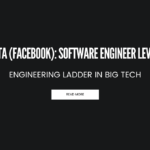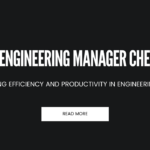Job interviews can be nerve-wracking experiences full of difficult questions designed to stump you. However, there are 3 common interview questions that candidates tend to struggle with. Being aware of these and preparing answers can help your interview performance tremendously.
The first is “Tell me about a challenge or conflict you’ve faced at work, and how you dealt with it.” Many falter by failing to tell a coherent story highlighting their skills. Second, answering “What are your strengths and weaknesses?” trips people up when they downplay their capabilities or give transparently fake weaknesses. Finally, “Why are you looking to leave your current job?” is a minefield, as candidates may bash their employer or seem desperate.
With practice, you can master these challenging questions. Have a story ready showing how you effectively overcame workplace adversity. Know your legitimate strengths and areas for growth, framing weaknesses positively. And focus on seeking new challenges without disparaging your current role. Polished answers demonstrate self-awareness and position you as a mature, capable candidate. Preparation and reflection on your experiences will help you tackle even the toughest interview questions.
Introduction
- Briefly introduce the specific work challenge or conflict you will discuss. For example: “One challenge I faced was when our team had disagreements over project priorities.”
Middle
- Describe the challenge/conflict in more detail. What was the situation? Why was it challenging? How did it make you feel?
- Explain how you approached dealing with the challenge/conflict. What actions did you take? How did you engage with others involved?
- Share the outcome or resolution. How did the situation get resolved? What did you learn?
Conclusion
- Summarize or reflect on the key lessons you learned through facing this challenge or conflict
- Highlight skills you applied or gained through the experience like communication, leadership, adaptability, problem-solving.
- End by reiterating how this experience makes you well-equipped to handle workplace challenges and conflicts.
This structure first provides context, then fully illustrates the specific challenge, your thoughtful approach/actions, and the resolution and growth you gained. The conclusion ties it all together to showcase your self-awareness, maturity and capabilities for handling workplace adversity. Let me know if you would like me to expand on any part of this scaffolding.
Introduction
- Start with a diplomatic opening statement. For example: “I’ve learned a lot in my current role, but I’m looking for new challenges to continue growing my career.”
Middle
- Provide 2-3 clear, professional reasons for wanting to leave. Some examples:
- Looking for opportunities to expand your skills/experience
- Interested in working for a larger/more innovative company
- Wanting to advance into a management role
- Seeking a role more aligned with your long-term goals
- Current company lacks growth/advancement opportunities
- For each reason, briefly expand with 1-2 sentences. Use specific examples if possible.
- Emphasize you are seeking a positive change to advance, not escaping a bad situation.
- Avoid negativity about current employer. Keep reasons focused on your own development.
Conclusion
- Wrap up by reiterating your interest in the role you are interviewing for.
- Share 1-2 sentences on why you are excited by the company/position based on your research.
- End on a positive note looking forward to potential mutual fit.
This structure focuses on professional, growth-oriented reasons for change. It balances diplomacy with clear insights into your motivation. The conclusion redirects attention to the positives of the potential new role. Let me know if you would like me to expand on any part of this outline.
Introduction
- Start by stating you will share a professional strength and area for improvement.
Strengths
- Name 1-2 specific strengths relevant to the role/company you are interviewing for.
- Provide 1-2 examples demonstrating each strength. Show why it is valuable.
- Focus on skills vs. personal traits. Align strengths with role requirements.
Weaknesses
- Identify an area you are working on improving that is not critical for the role.
- Describe steps you are taking to improve in this area. Share progress made.
- Present the weakness as an opportunity to show awareness and a desire to grow.
Conclusion
- Summarize how your strengths make you a great fit for the company/position.
- Express enthusiasm to continuously expand your skills if hired.
- Thank interviewer for the opportunity to discuss your strengths and areas for growth.
The scaffolding first previews the structure. The strengths section provides compelling evidence you have abilities to succeed in the role. The weakness is framed as professional development. The conclusion refocuses on the strengths and your fit. This outlines covers both strengths and growth areas while emphasizing qualifications. Let me know if you need any clarification or have additional questions!


